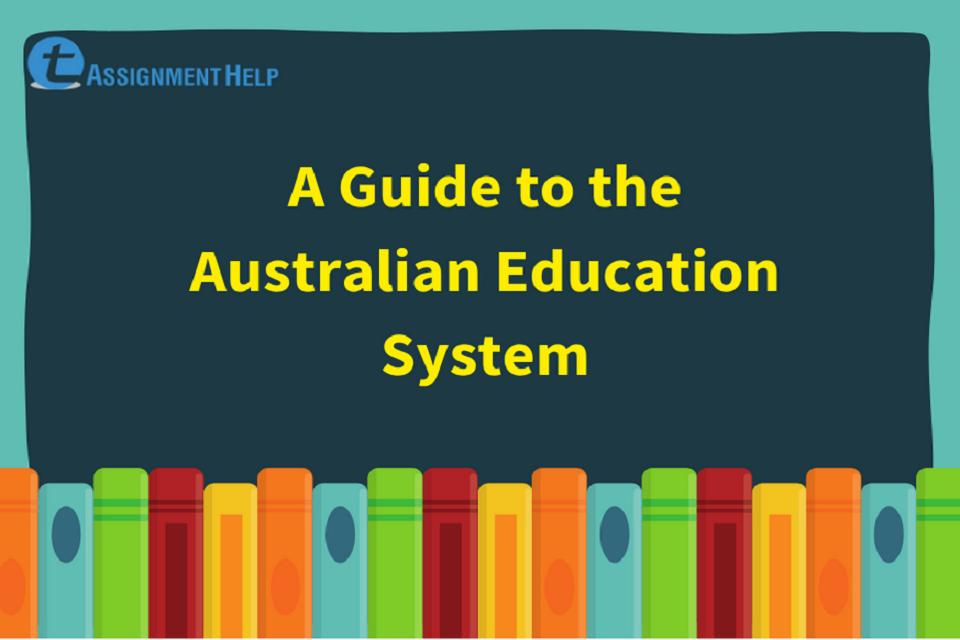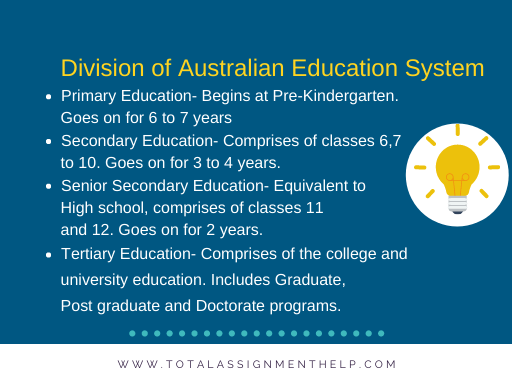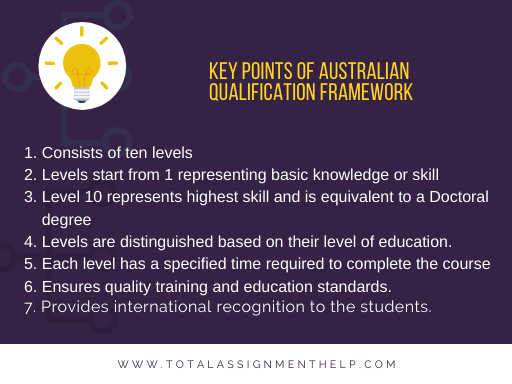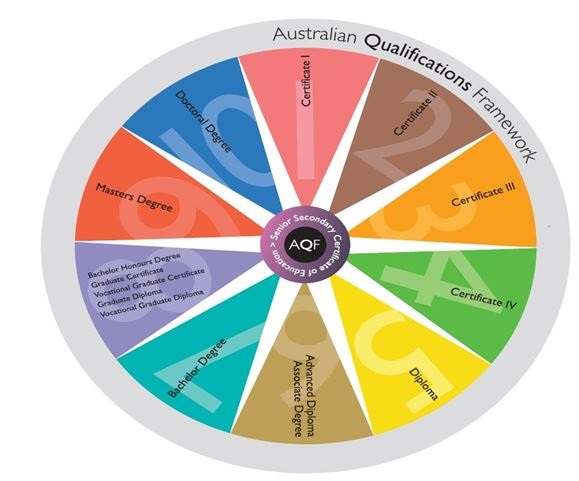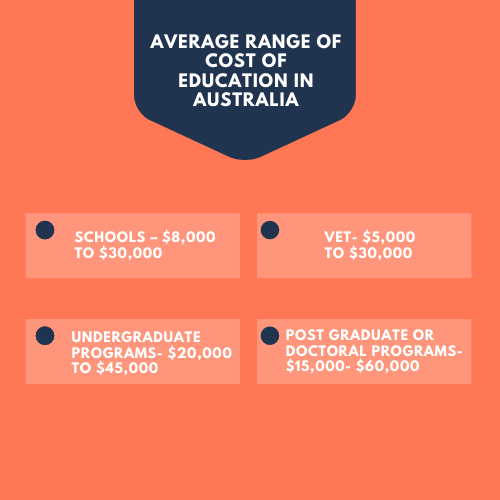The Australian Education System is one of the most well-structured and prestigious education systems. That is the reason students from all over the world are looking for opportunities to study in Australia. Whether you are an overseas student looking for opportunities or a student already living in Australia, this article will help you to get the required information you need to make an informed decision about your studies or the education of a loved one.
Irrespective of a government or a private institution, the whole education system of Australia is regulated by the Australian Curriculum, Assessment and Reporting Authority. It is controlled by the Minister of Education, currently Dan Tehan. The education industry of Australia is well established and comprises of major schools and universities, many of which are more than a century old. Education is a billion-dollar industry in Australia and contributes about 5-6% of their GDP. It is compulsory in Australia to provide education to a child between the ages of 6 to 16.
Distribution of Australian Education System
1) Primary Education: It comprises of the early stages of education which are provided to a child. It includes preparatory also known as Pre-school and Kindergarten. It runs for 6 to 7 years.
2) Secondary Education: After completing their primary schooling students get enrolled for secondary education which runs for 3-4 years depending on different institutions. It comprises of classes 7 or 8 to 10.
- Senior Education: This comprises of the senior years of a student’s education. It is for two years and runs from classes 11 to 12. It is a part of secondary education.
3) Tertiary Education: After completion of the schooling education student can pursue further higher education from any University or VET Institute of their choosing. This tertiary education comprises of their undergraduate, postgraduate and doctorate programs.
Vocational Education and Training- VET
Apart from the schooling and higher education from an accredited university, Australia has an interesting program called the Vocational Education and Training Program.
Vocational Education and Training sector offers many courses from Registered Training Organisations or RTOs. The RTOs consists of private institutions and Technical and Further Education Institutes (TAFE).
The VET sector in Australia aims to provide working skills to students after completing their Secondary Schools. VET courses enable the students to easily find job opportunities and continue their studies after taking a break and switch between different careers. They ensure consistent quality of training throughout the country, they keep students updated with the latest advancements in the respective industry, provide students with a nationally recognized certification course.
VET courses provide occupational skills to students in the form of certifications, Diploma, Advanced Diploma and English language Courses. These training courses may cost from 5,000$ to 30,000$ depending upon the course and institutes.
VET courses require a student to have completed their senior secondary education to get enrolled; some courses even require pre-existing knowledge or work experience.
Australian Qualification Framework (AQF)
The Australian Qualification Framework is an integral part of the Australian Education System. It links all the different levels of schools, universities and VET institutions together to form their National Education Policy.
AQF is an act which was introduced in 1995; it encompasses all institutions of educations and establishes a set of requirements and goals which help in categorising the skills and the occupational competency of a student. The Australian Qualification Framework is a set of hierarchy levels which set a standard of abilities and qualifications of an individual.
Main points of AQF:
- It consists of ten levels.
- These levels start from 1 which represents very basic knowledge or skill of a subject to level 10 which is the highest and is equivalent to a Doctoral degree.
- These levels are distinguished based on their level of education.
- Each level has a specified time which is required to complete the respective course of study.
- It ensures quality training and education standards.
- Provides international recognition to the students.
Education Services for Overseas Students Act (ESOS)
The Education Services for Overseas Students act was established in 2000. This act was established to protect the rights of foreign or international students who are currently studying in Australia on a valid student’s visa.
The ESOS act helps an international student in the following ways:
- It protects your right to information. It ensures you get all the information about your course, tuition fee, curriculum etc. from the university.
- It avoids any duplication and scams.
- It protects the tuition fee which you have paid to the university by validating it.
- It helps in completing the refunds process in case the university denies your course or if it is unable to teach it.
- It maintains an equal standard of education.
- It specifies the conditions which both the parties are liable to fulfil i.e. Student and University.
Academic Year in Australia
The days in an academic year in the Australian schooling system varies in different states and on the course which you have undertaken.
Schools: (Primary and Secondary)
In most schools all across Australia, the academic year begins in February and ends in early December. The year consists of 200 days which are divided into four terms.
- Term 1- February to April
- Term 2- April to June
- Term 3- July to September
- Term 4- October to December
Term 4- October to December
Tertiary: (VET and Universities)
Usually, in both the cases of VET Institutes and Universities, the whole academic year is divided into two semesters for Undergraduate degrees as well as Post Graduate degree, but some universities also offer 3 semesters or trimesters depending on the courses. It starts in February in most institutes.
Doctoral: PhD or Doctoral candidates on the other have the option to choose a time of starting the year by consulting with their universities since most doctoral candidates don’t have to attend classes because of their research.
Course Credit: The most impressive feature of the Australian education system is that it recognizes your skills and prerequisite knowledge while evaluating your course. In this feature, you are awarded course credits depending on the knowledge and skills you have learned somewhere else or the level of training and work-based skills that you have.
The Recognition of Prior Learning (RPL) program allows students to build on their course credits and transfer them. These credits allow students to skip certain subjects which they have already learned.
Australia has a dedicated organisation which deals with the recognition of qualification and skills from other countries, it is called the National Office of Overseas Skills Recognition (NOOSR).
The Australian schooling system requires a definite number of subjects which you must study to complete your qualifications. While selecting the course the student is required to present proof of their prerequisite experience and qualification. This proof may be in the form of a reference from the place of work or in the form of a certification from a recognised university or educational institute. The National Office of Overseas Skills and Recognition (NOOSR) ensure the validity of the documents provided. Once approved you are eligible to apply for exemptions from studying a particular subject or a unit, if applicable. Keeping in mind that if you opt for exemption from a subject, you still have to take up another subject to complete your specified number of credits, to complete your certification from that university.
Cost of Education
The tuition fee is a major deciding factor while selecting a course or subject of study in any university all over the world. It is very important to consider the financial aspects of a course before making any major decisions since education is one of the most crucial factors of life. The Australian Education System entails the following tuition fees per year according to their University and level of education.
Schools – $8,000 to $30,000
Depending upon the nature of the school and the subjects that you opt for, the tuition fee of one student per academic year may be anywhere between 8K to 30K
VET- $5,000 to $30,000
Vocational and educational training courses cost about 5K to 30K per year depending upon the course and the institution for which you are studying.
Undergraduate Programs- $20,000 to $45,000
The Bachelor’s degrees in most institutions in Australia have tuition fees ranging from 20K to 45K.
Post Graduate or Doctoral Programs- $15,000- $60,000
The doctoral or master’s degree programs are the most expensive of them all. Their fee may be anywhere between 15K and 60K.
These fee ranges do not include many courses which are exceptionally expensive such as medical schools and veterinary schools. Though you can get the exact tuition fee of each course from the respective websites of the Institutions where you are planning to study. Even then the cost of education in Australia, especially in private institutes, is significantly high.
Scholarships: Due to the high cost of education in Australia, many students can not avail the facility of higher studies in Australia. To tackle this issue and to make education more affordable to everyone, there are many scholarship schemes which are available for aspiring students to help with their tuition fees. These scholarship programs and grants are offered by the Australian Government, Universities and many private and public organisations.
Students have easy access to information about these grants and scholarship programs. All information related to the scholarship is present on the University’s website or the provider’s portal. Students have to contact the organisation which is providing the scholarship to get to know about the eligibility criteria. If eligible students can avail this aid to get help with their financials.
Here are some of the major Scholarships which are offered to international as well as national students:
1) Research and Training Program (RTP): These scholarships programs are provided by the Australian Government. It was previously known as the International Postgraduate Research Scholarships (IPRS) program. Applications for this program are open throughout the year. Applications for RTP are sent directly to the university from which you are planning to study. These scholarships are provided only to domestic and international students who are undergoing post-graduation or are conducting doctoral research. This scholarship covers one or more of the following aspects:
- Tuition Fees
- Cost of living throughout the course
- Costs related to the research
2) Australia APEC Women in Research Fellowship: This scholarship is offered by the Australian Govt. and the APEC fellowship. It is an organisation which provides financial aid to exceptional women who are doing research. It is provided only to females who are doing their post-graduation research. It promotes the participation of women researchers from the Asia Pacific region.
3) Australia Awards Scholarship (AAS): This scholarship aims to provide educational opportunities to participants particularly from developing countries located in the Indo-Pacific region. It is offered by the Australian Government for undergraduate as well as postgraduate courses. It was previously known as Australian Development Scholarships (ADS). It is offered only to international students to build Australia’s relations with partner countries. The dates of application are country-specific. The following benefits are included in this scholarship:
- Tuition Fee
- Accommodation Allowance
- Air Travel Allowances
- Fieldwork and Research Allowance
4) Destination Australia Program (DAP): This scholarship is funded by the government of Australia. It is provided to 1000 students each year. It is offered to domestic as well as international students. The selected students will be provided with an opportunity to study at the regional campuses all across Australia. The main objective of this program is to invite students to study, research and help in the development of regional Australia and its tertiary education providers. This program was announced as part of Planning of Australia’s Future Population.
Apart from these, there are other private organisations which offer scholarship programs to students from all over the world. With the help of these scholarships, many students are participating to get admission in the most prestigious universities in Australia.
Hope this article provided you with the information you needed about the Australian Education System and the various ways in which you can access the vast opportunities available to you.

